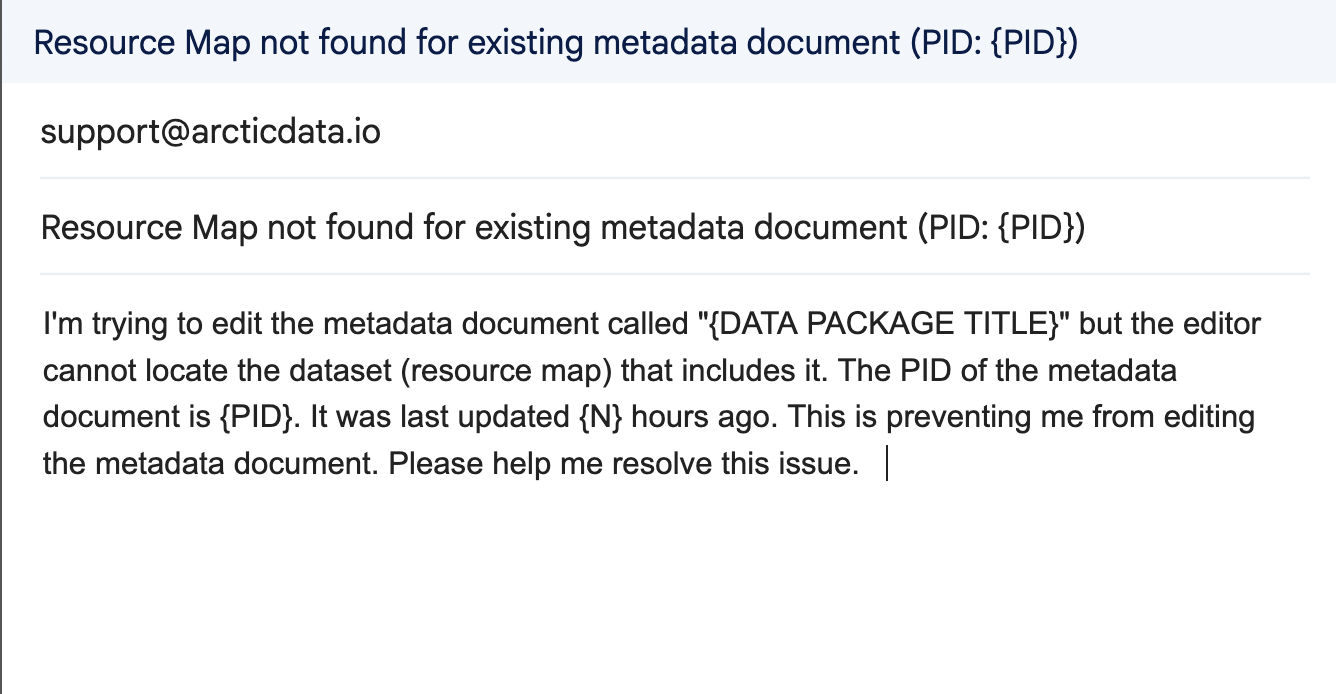Resource Map Resolution and Failure Tracking
MetacatUI includes a ResourceMapResolver utility (introduced in v2.34) that improves how data package relationships are resolved during editing. The resolver uses multiple strategies to locate the resource map for a given metadata PID.
In earlier versions of MetacatUI, the editor searched only the Solr index. If a resource map wasn’t found, it would create a new one. This made sense only in rare cases where a metadata document had never been part of a data package. In most cases, it caused confusion when a document was part of a data package but the resource map wasn’t found, for example due to delayed indexing. Starting in version 2.34, the resolver can find a resource map even if it is not indexed yet by using system metadata or local storage. It will also never create a new resource map for an existing metadata document, which helps avoid broken obsolescence chains and apparent missing data from packages.
How the Resource Map Resolver Works
The ResourceMapResolver attempts the following strategies, in order, to locate a resource map for a given metadata PID:
- Searching the Solr index
- Checking the local cache, where previously found resource map–metadata PID relationships are stored
- Walking the obsolescence chain using system metadata. The resolver walks the metadata’s obsolescence chain backward to find the first PID with a resource map in Solr, then walks the resource map’s obsolescence chain forward the same number of steps to find the matching resource map.
- Guessing the resource map PID using the naming convention
resource_map_{metadata PID}, then verifying its existence and relationship to the metadata PID
When No Resource Map Is Found
If none of these strategies find a resource map, the resolver notifies the user that it could not locate one for the metadata document being edited. The notification includes a link to contact support, pre-filled with the document’s title and PID, making it easier for users to report the issue.


Tracking Resource Map Resolution Failures
When all resolution strategies fail, it usually means that an existing metadata document does not have a resource map associated with it. This can happen for various reasons and often requires investigation or manual intervention. When this occurs, MetacatUI emits a custom event to Google Analytics.
This helps repository managers identify which metadata records may need attention. The event is sent to Google Analytics 4 (GA4) using the following format:
gtag("event", "resource_map_missing", { pid: "{UUID/DOI}" });
This event:
- Fires once per PID per page load
- Includes the PID of the affected metadata document
- Is emitted only when all resolution strategies fail
To make use of this feature, repository managers can set up a custom dimension in Google Analytics to track the pid parameter. This allows for filtering and reporting on which PIDs are missing resource maps.
Viewing and Filtering resource_map_missing Events in GA4
To view and filter these events in GA4:
- Open your GA4 property
- Navigate to Reports → Engagement → Events
- Look for the event named
resource_map_missing - To view the pid values, follow the steps below to register a custom dimension
Setting Up the pid Parameter in GA4
To access pid values in GA4 reports:
- Go to Admin → Custom Definitions
- Click Create custom dimension
- Fill out the form:
- Dimension name: pid
- Scope: Event
- Event parameter: pid
- Click Save
Once configured, pid will appear as a filterable and reportable field in Explorations and event reports going forward. Note that this is not retroactive.